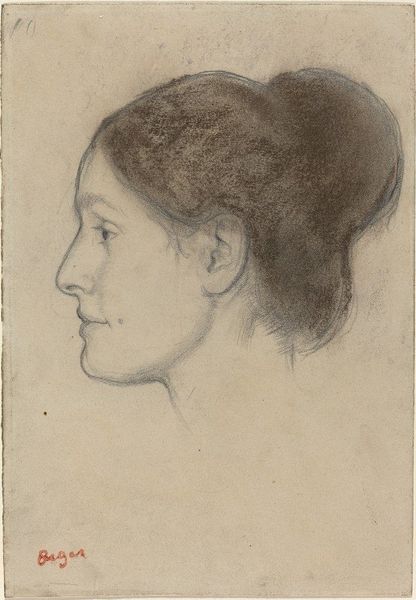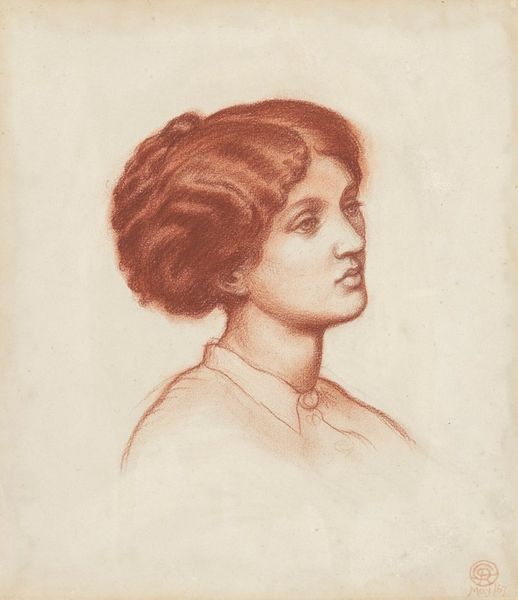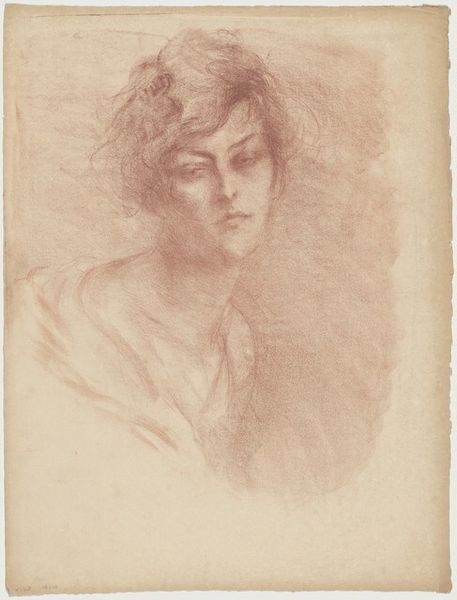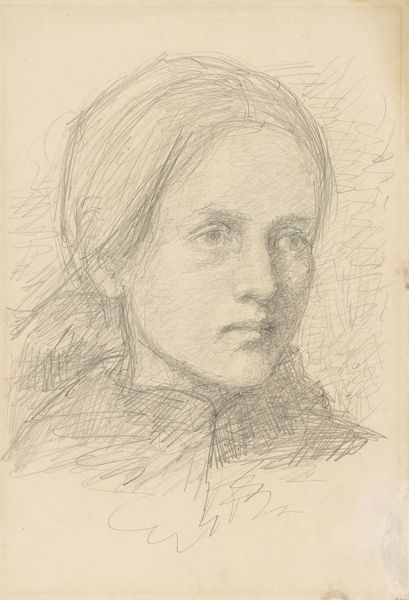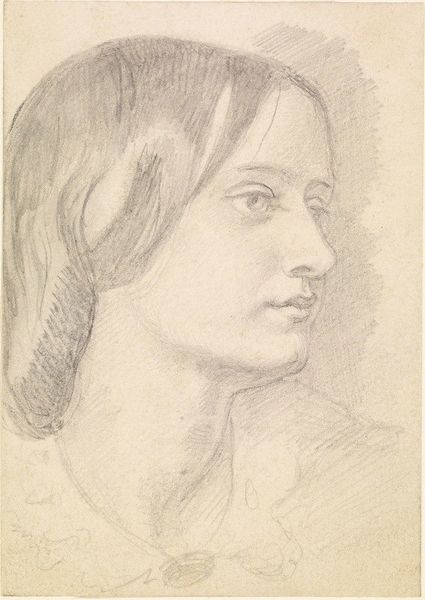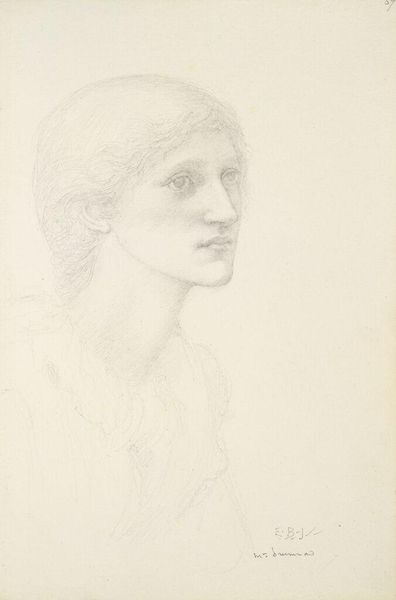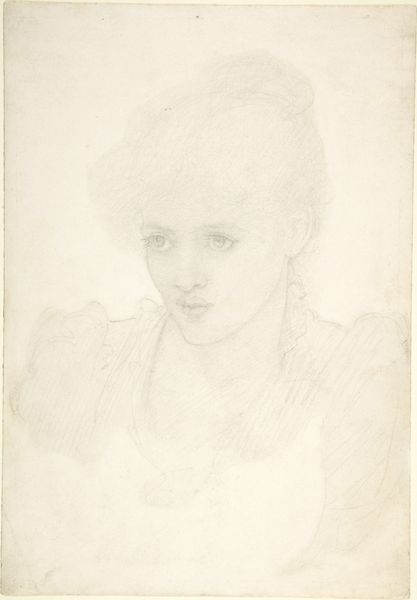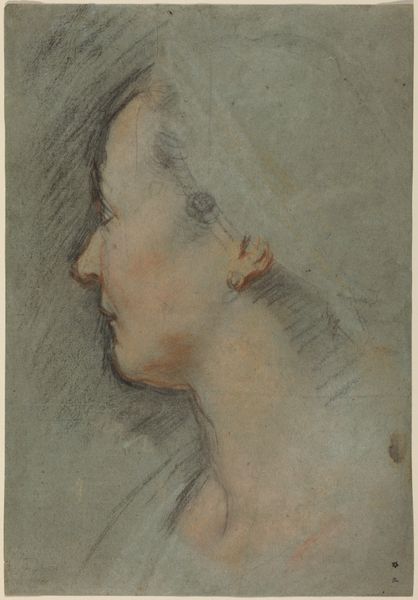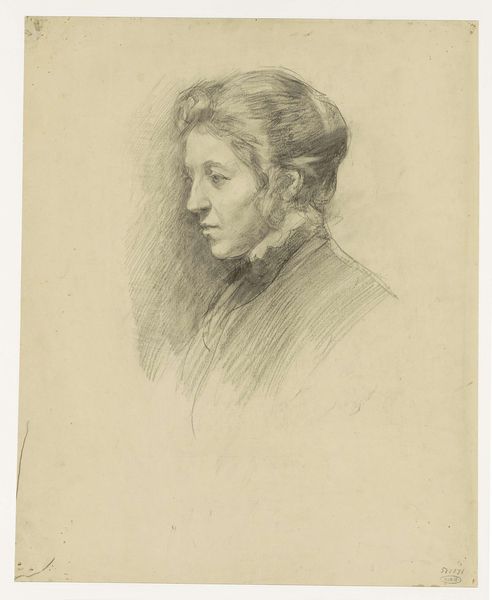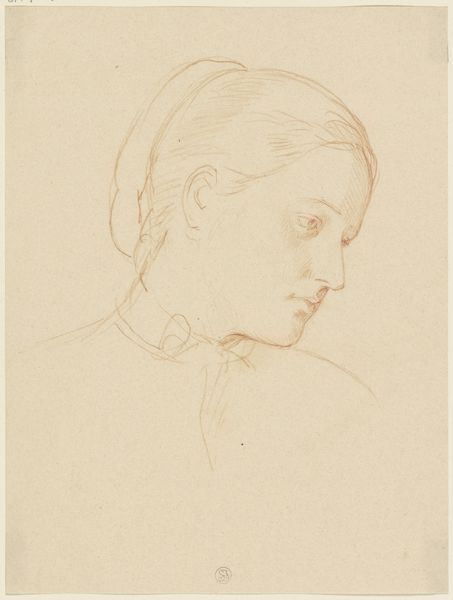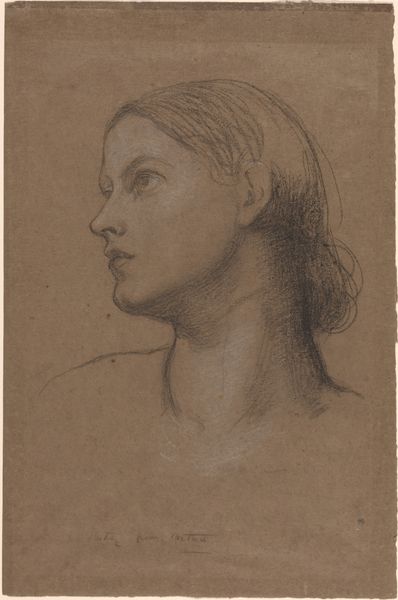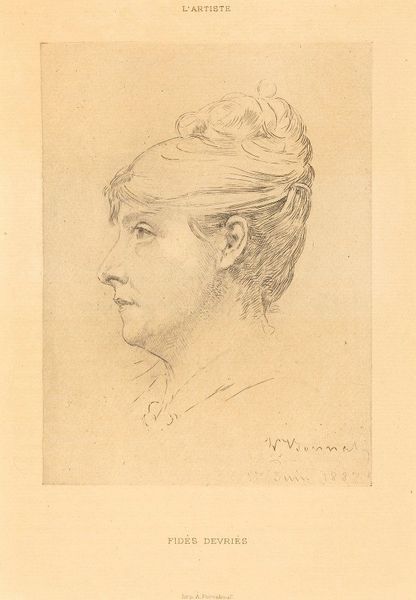
drawing, pastel
#
portrait
#
drawing
#
facial expression drawing
#
impressionism
#
portrait reference
#
portrait head and shoulder
#
animal drawing portrait
#
portrait drawing
#
facial study
#
pastel
#
facial portrait
#
academic-art
#
portrait art
#
fine art portrait
#
realism
#
digital portrait
Copyright: Public Domain: Artvee
Editor: So, here we have "Tête de femme de trois-quart à droite", a portrait by Pierre Puvis de Chavannes. It's a pastel drawing, and I’m struck by the texture and how visible the marks of the medium are. What stands out to you when you look at this piece? Curator: For me, the intrigue lies in how Puvis de Chavannes utilizes the pastel medium itself. We're seeing more than just a likeness; we're witnessing a negotiation with the materials. Consider the socio-economic implications – pastels offered a certain accessibility compared to oils, enabling a different class of artists and patrons to engage with portraiture. Editor: That's a fascinating point. I hadn’t considered the material's accessibility as a factor in who gets portrayed. Do you think the visible strokes are a conscious choice, maybe a comment on the labor involved in creating art? Curator: Absolutely. The overt visibility of the pastel strokes defies the academic polish favored at the time. It acknowledges the artist's hand, the very act of creation. Think about it – what statement does the artist make by *not* trying to erase the traces of their labor? What is being made visible in that decision, about the place of labor in art and the cultural view of the 'hand made'? Editor: It’s like he's challenging the established art world norms, even on a material level. Is this why we see pastel work often challenging oil painting as "high art"? Curator: Precisely! It brings the conversation around production and labor to the forefront. By embracing the inherent qualities of pastel – its fragility, its directness – he's engaging in a subtle yet profound critique of artistic conventions and, by extension, the society that upholds them. This opens so much to analyze about consumerism and taste! Editor: I see now, the material itself is a form of social commentary. That changes my entire perspective on the piece. Thank you for bringing that to my attention. Curator: My pleasure. Remember, the medium is not merely a vehicle, but an active participant in the meaning-making process. Keep questioning those power structures when considering an artist’s decisions.
Comments
No comments
Be the first to comment and join the conversation on the ultimate creative platform.
